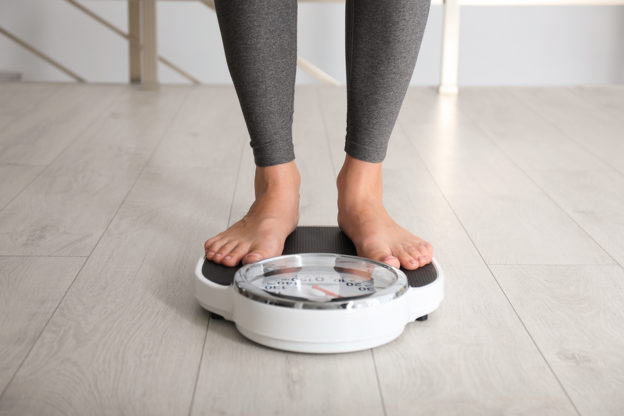By David Blyweiss, M.D., Advanced Natural Wellness
June 26, 2020
This might surprise you…
But celebrities like Denzel Washington, Matt Damon and Tom Cruise are actually overweight according to their body mass index.
Crazy, I know…
I’m sure hordes of adoring fans would strongly disagree.
People would be just as surprised to learn that muscled guys like Dwayne (the Rock) Johnson and John Cena are considered obese.
Again, this is based on their body mass index.
Now, you know as well as I do that terms like “overweight” and “obese” definitely do not apply to these superstars.
Women admire them for their lean, muscular physiques… and most men wish they looked half as strong and fit.
But these days, body mass index (BMI) is used all too often as the definitive measure of “fatness.”
Open your arteries, improve blood flow for a new health miracle...
Did you know your circulatory system has over 60,000 miles of arteries, veins and other blood vessels, if stretched end to end?
But as you age, your blood vessels undergo changes, which may cause them to stiffen, thicken and get clogged.
GOOD NEWS! Doctors have now identified a “Miracle Molecule” inside your arteries that helps OPEN your arteries and IMPROVE blood flow.
It’s what Dr. Valentin Fuster calls it, "One of the most important discoveries in the history of cardiovascular medicine."To you, that means...
- Healthy blood pressure
- Sharper mind and memory
- Skyrocketing energy and muscular strength
- Increased pleasure and passion in the bedroom
- Improved circulation to every cell and organ in your body
Go here to discover a new natural way to significantly boost the levels of this miracle molecule in YOUR body NOW!
Seems a little unfair, right?
In truth, BMI doesn’t measure fat at all. It can’t tell the different between lean muscle and fat mass.
All it really does is calculate whether your weight is well-matched to your height. It doesn’t consider the amount of muscle on your frame or any other variables.
In other words, people can have the same BMI yet have very different body compositions.
On the flip side, it also means that a “low” or “normal” BMI isn’t always someone in picture-perfect health. You might have too much fat even though you wear small-sized clothing (a condition often dubbed “skinny-fat”.)
As a physician, I find the misguided reliance on BMI to be very frustrating. Just imagine being in my shoes, trying to convince a patient who thinks they’re thin – or skinny – that they are carrying around too much fat!
But all too often, some of my thinnest patients are also the fattest.
In particular, the body mass index doesn’t take a measure of central obesity (or belly fat). So a lot of normal weight individuals are carrying around large amounts of visceral fat in their abdomens.
You can call it a jelly belly, a beer belly, a muffin top, love handles or whatever you want…
Just don’t laugh when you call your belly fat by its pet name. Because there is absolutely nothing funny about it.
Tackling the Challenge of Belly Fat
When you have a normal BMI along with central obesity, it is bad news for your health.
Are You Suffering From...
- Love handles and a pot belly
- Romance that isn't what it used to
- Forgetfulness and inattention
- Low (or no) strength and endurance
- A sex drive that's shifted into neutral...or worse
If so...you may have Mature Male Burnout. Click here to discover more about this unique condition and what you can do about it.
This type of fat creates an inflammatory environment that increases your chances of developing high blood pressure, diabetes and diabetes-related complications. It also raises your risk of cardiovascular disease and early death.
One of the easiest ways to discover if you have central obesity is to determine your waist-to-hip ratio or WHR.
Just take a tape measure and wrap it around your waist at the narrowest point (between the bottom of your rib cage and the top of your belly button.) Record the circumference in inches.
Then measure your hips at the widest point. This is where your buttocks are at the largest. Record that number. Then, divide your waist measurement by the hip measurement.
Let’s say that your waist is 36 inches and your hips are 40 inches. Just divide 36 by 40. This would put your WHR at 0.90. The higher your WHR, the higher your risk of serious health consequence.
Here’s how to read your results:
| Low Risk | Moderate Risk | High Risk | |
| Men | .90 or below | .91 to 1.0 | 1.0+ |
| Women | .80 or below | .81 to .85 | .85+ |
If you fall into the moderate to high risk range, it’s important to take action.
Time-Restricted Eating Could Be Your Ticket to Health
I’ve had the best success with patients who incorporate Mediterranean style eating habits with intermittent fasting (in the form of time-restricted eating). Then, they add in regular exercise – and stick with it.
I know it might sound intimidating. And it can be tough to commit at the beginning. But patients who tough it out find that within just a few weeks these changes become a normal part of their lifestyle.
So here’s the deal…
Designate a window of six to eight hours each day to enjoy regular meals.
Throughout this time, eat as much healthy, plant-based foods as you want. Veggies, fruits and healthy fats should take up about 85% of your diet. Fill the remaining 15% of your meals with clean-source animal proteins, preferably wild-caught fish.
Then fast for the remaining 16 to 18 hours. This is optimal. (The minimal fasting time is 13-14 hours, but it will be somewhat less effective. Long term is the key.)
During the fasting period, your body will automatically trigger several processes that can help you burn off excess visceral fat, normalize your metabolism and optimize your health. This works even though you aren’t really eating any fewer calories than normal.
It’s also important to get plenty of physical activity to decrease visceral fat mass and promote the development of lean muscle.
I personally recommend skipping the endurance training. Instead, go for high intensity interval training (HIIT). This type of exercise is proven more effective when it comes to reducing total abdominal fat, visceral fat and whole body fat mass.
Here’s a quick way to get started with HIIT, even if you’ve never tried it before.
SOURCES:
De Lorenzo A. Normal-weight obese syndrome: early inflammation? American Journal of Clinical Nutrition. 2007; 85:40-45.
Romero-Corral A. Normal weight obesity: a risk factor for cardiometabolic dysregulation and cardiovascular mortality. European Heart Journal. 2010;31:737-746
Fat mass index, not BMI, associated with cardiovascular events in people with diabetes. Press Release. Canadian Medical Journal Association via EurekAlert. Sept 2019.
Chandramouli C, et al. JJL, et al. (2019) Association of obesity with heart failure outcomes in 11 Asian regions: A cohort study. PLoS Med. 2019;16(9): e1002916.
Franco LP, et al. Normal-weight obesity syndrome: diagnosis, prevalence, and clinical implications. Nutr Rev. 2016 Sep;74(9):558-70.
Sahakyan KR, et al. Normal-Weight Central Obesity: Implications for Total and Cardiovascular Mortality. Ann Intern Med. 2015 Dec 1;163(11):827-35.
Bertoli S, et al. Adherence to the Mediterranean diet is inversely associated with visceral abdominal tissue in Caucasian subjects. Clin Nutr. 2015 Dec;34(6):1266-72.
Barnosky AR, et al. Intermittent fasting vs daily calorie restriction for type 2 diabetes prevention: a review of human findings. Transl Res. 2014 Oct;164(4):302-11.
Maillard F, et al. Effect of High-Intensity Interval Training on Total, Abdominal and Visceral Fat Mass: A Meta-Analysis. Sports Med. 2018 Feb;48(2):269-288.







